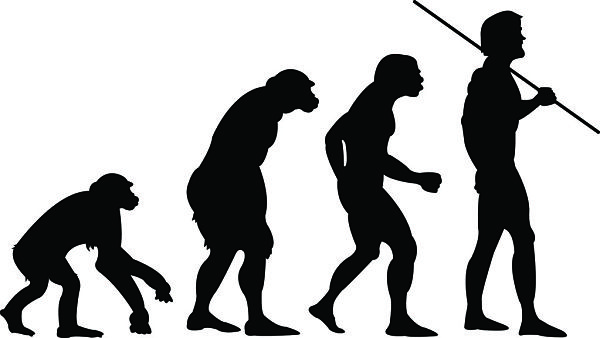Opinion: Economic Theory Needs a Major Overhaul

Current mainstream economic theory needs a major overhaul. Why? Because it seems to ignore that modern advanced economies are evolutionary complex systems. Both economic theory and political economics seem to believe that modern economies are big physical systems whose output can be precisely quantified in aggregate. But this belief is far from reality as modern economies change and innovate at a fast pace; they are more akin to biological systems.
One of the most important aggregates is real GDP. Long-term economic growth is measured as percentage change of real GDP, expansions and recessions are also measured as changes of real GDP. Strictly related to real GDP is inflation, which is a closely watched global parameter. Even small changes in GDP or inflation provoke strong reactions.
“Real” GDP that isn’t so real
Unfortunately, both concepts, real GDP and inflation, are inadequate to describe economies whose products and services keep on changing continuously and rapidly and whose complex structure also keeps on changing together with the web of symbolic values of goods and services. Real GDP is not a measure of the quantity produced by a country. Instead, it is an abstract term obtained discounting nominal GDP, that is the market value of economic output, by an inflation index.

Real GDP and inflation are strictly related because real GDP cannot be measured directly. In fact, it is impossible to aggregate the myriad of heterogeneous products and services that form the output of a modern economy. The only possible aggregation is through prices. Real GDP is obtained by discounting nominal GDP by an inflation index based on a Consumer Price Index (CPI). In most countries, the CPI is computed using the Laspeyres, Paasche, or Fisher indexes, invented in the late 19th or early 20th century. (See Milana, Carlo. 2009. “Solving the Index-Number Problem in a Historical Perspective.” EU KLEMS Working Paper No. 43 for an overview. Available at http://dx.doi.org/10.2139/ssrn.1349266)
It is well known since the analysis of Ragnar Frisch in 1930 that no index can be considered the true index. But the really critical point is that indexing can be applied only to goods and services that do not change – yet goods and services shift constantly. One should in theory be able to price qualitative changes, and hedonic measurement attempts to do so by replacing products with a set of features. For example, hedonics would price the features of a laptop computer – for example, processor speed, memory, screen size and weight – rather than the laptop itself. But features are anything but universal, limiting the applicability of hedonics. The end result is that inflation is computed on a static subset of products and services and then arbitrarily extended to the entire product space.
Key indicators
To correctly model modern economies, macroeconomics should take into account:
- Complexity
- Qualitative changes
- Economic structure
- The process of generation, allocation, and transfer of money
- Instabilities
Some of these issues have been addressed outside of mainstream economics. The modelling of the circuit of money, its generation and allocation, and the detection of eventual instabilities has been successfully addressed. The circuit of money has been included in several models, for example those developed by Steve Keen (2010). Keen built on the predator-prey Goodwin model (1967) and used the stock-flow-consistency (SFC) framework of Godley and Lavoie (2007) to model instabilities and the money circuit.
In a number of papers, I outlined a simple solution for handling inflation in a complex economy. The proposed solution, covered in a forthcoming paper, consists in dividing the space of goods and services in two segments:
- Goods and services that change slowly. The classical concept of inflation can be applied in this sector and inflation can be measured.
- Goods and services that innovate rapidly, due to both technological innovation and changes of symbolic values. In this sector inflation cannot be measured and real and nominal values coincide.
Under this modelling proposal, production functions are split into two production functions for the two sectors. It allows us to explain a number of apparent “puzzles,” including missing inflation and productivity decline. When taken together with a modern view of the money circuit, it goes a long way toward explaining crises and crashes. It also explains the rise of extreme inequalities.
While this modelling proposal has explanatory power, it is only a first step. To create a new framework for economic theory and policy-making, we need to develop a new notion of the output of a country. Economic output should include both quantity and quality. A more general notion of inflation is also needed. In simple terms, we have to measure qualitative changes.
Measuring complexity and change
A possible way of measuring qualitative changes is through complexity. the economic complexity index (ECI), developed by Ricardo Hausman and Cesar Hidalgo at MIT and by Luciano Pietronero et al. at the University La Sapienza in Rome. But these indexes are used as predictors of growth in the classical quantitative sense.
What is needed is a change of framework for macroeconomics. It must follow the methods of modern science, which is rigorously empirical yet also contains abstract terms. We need to ask “What are the true economic observables?” and then develop a theory that is globally related to these observables. We have to free ourselves from the pretension that variables be intrinsically descriptive – constructs such as the production function cannot be descriptive, after all.
It will be a difficult process because solutions need to be theoretically sound as well as practically acceptable. There is an urgent need to change economic framework as we have to address ecological and social problems. Understanding and value qualitative changes will be a critical issue.

























































































